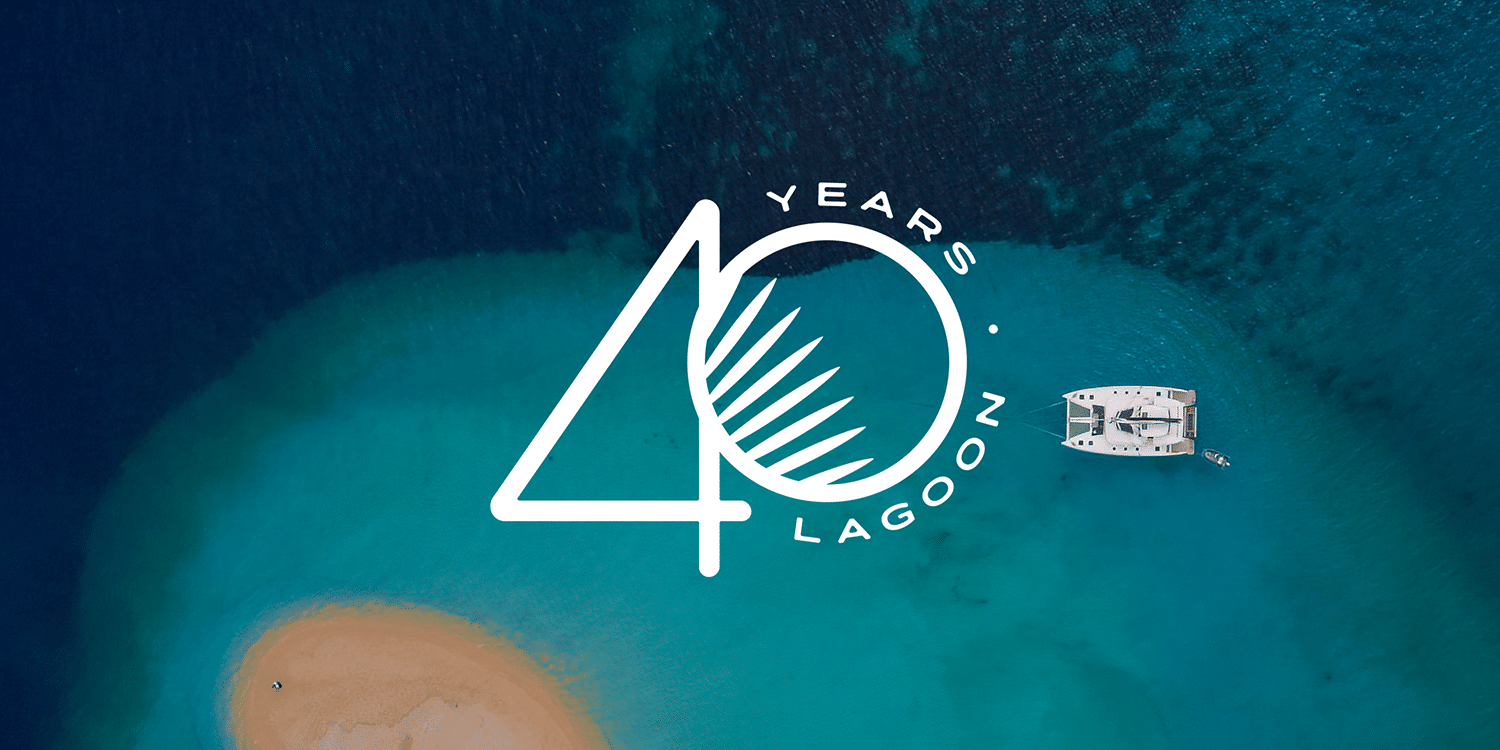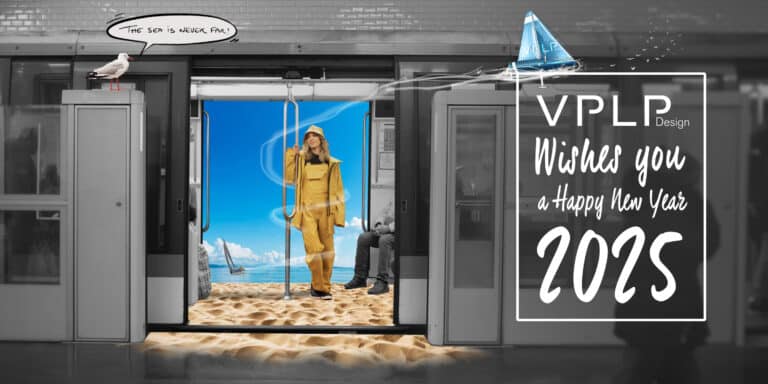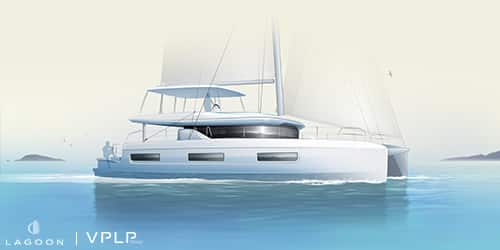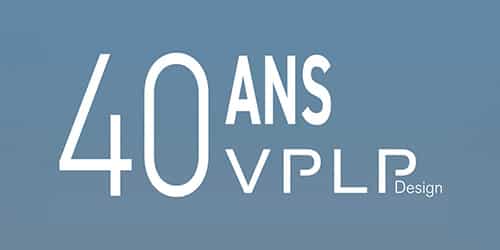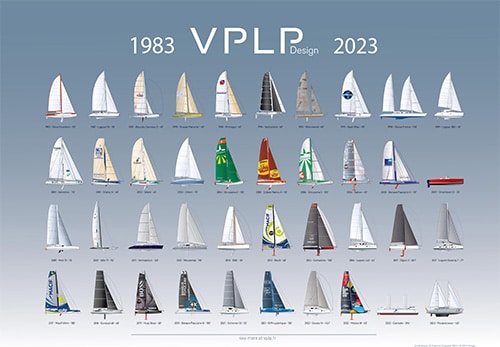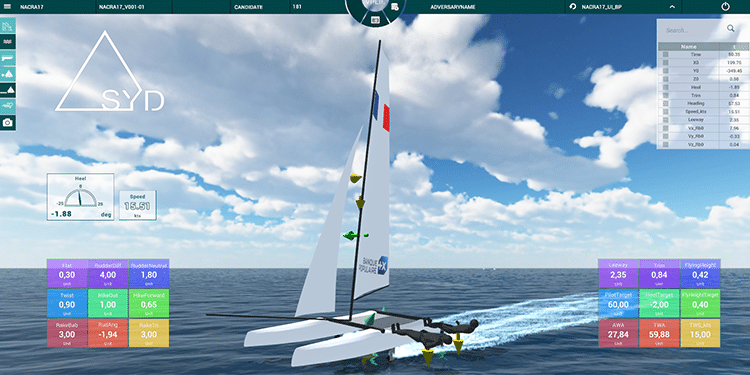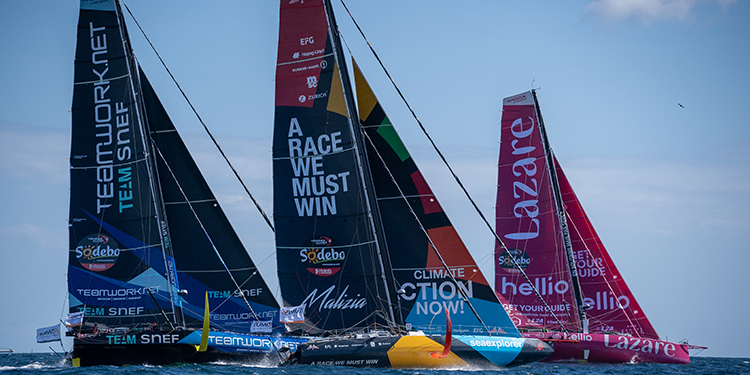Over the last forty years, yacht-builders Lagoon have established themselves as the very embodiment of the cruising catamaran. Since the launch of their first model the Lagoon 55, more than 7,000 units comprising almost forty different models have been marketed throughout the world. Marc Van Peteghem, architect and founder of VPLP Design, and Mathias Maurios, partner naval architect and head of the firm’s Cruising Division, look back at their rich forty-year-long history.
The design of the first Lagoon 55 dates back to 1984 and the first yacht to be launched took to the water three years later. What was the catamaran market like back then?
Marc Van Peteghem: There wasn’t one! Yachties didn’t really consider catamarans to be real boats. I would like to take this opportunity to pay tribute to the early adopters of the Lagoon 55s who were convinced that multihulls were the ideal cruising machines and yet were equally aware of the prevailing conventional view. To get the brand off the ground we had to make the catamarans look like a monohull, drawing a yacht with classically elegant lines. In fact the Lagoon 55, is basically an outline! This elegance came at a price, reducing headroom below decks and offering somewhat limited clearance above water, flaws that were partially rectified with the Lagoon 57.
Initially, the early projects were treated as if they were separate projects. How did this evolve into producing series of boats?
Marc Van Peteghem: We owe the success of this amazing adventure to catamaran enthusiasts and their vision of yachting. The first Lagoons were built one by one at the Jeanneau Techniques Avancées yard under the direction of Jean-François de Prémorel. Series construction developed progressively as subsequent orders came in. In particular, Bruno Belmont began to nurture the development of the brand from the second project onwards and since then, he has been involved in the design of every single model. Following the purchase of Jeanneau by Bénéteau, the Lagoons were assigned to the CNB yard under the direction of Dieter Gust who, realizing that we were witnessing the dawn of the multihull era, began to put in place the building blocks of the industrial process we know today.
With the second generation of Lagoons, launched in 1997, you innovated with vertical glazing around the coachroof. That took some guts, didn’t it?
Marc Van Peteghem: It caused quite a stir at the time, but seeing the concept become a mainstream feature a few years later was the best kind of recognition. Bénéteau taking over the yard was an opportunity to rethink the entire range and François Chalain (*), who wanted to drive the brand forward, pointed us in the direction of this solution. It was an obvious architectural response to the “greenhouse effect” that plagues sloping coachroofs. Moreover it increased internal volume and deck space. It was an obvious but daring solution, and we had to have enough elbow room at the yard too!
Lagoons have often been pioneers in terms of architecture (gull-wing design of the underside of the saloon, mast stepped further aft, flybridge…), and they also established a certain style. What did Patrick le Quément bring to the table?
Mathias Maurios: Patrick joined us for the fourth generation, for the Lagoon 39 in 2013. He was and still is a leading figure in automobile design and he taught us about curves! His first job was to sculpt the bow at the hull-deck interface to give it its diamond shape. Initially his input was in small doses but later he became a driving force. Today the Lagoons all feature a very sculptural design. Patrick continues to collaborate with us and he coaches our own designers too.
Marc Van Peteghem: He also pointed us in the direction of new applications, such as Alias. Retracing Lagoon’s history is like looking back at the development of naval architecture, its techniques and tools. From paper plans which have a tendency to distort, to the fully digital solutions of today. And meeting some great people along the way.
Turning to the present day, how does the new Lagoon 60 (unveiled in Bordeaux on 6 March) fit into the company’s range?
Mathias Maurios: It’s the link between Lagoon and Lagoon Yachts, a catamaran with an unhindered view of the sea. From head to stern, nothing interferes with the panorama. You never lose sight of the horizon thanks to the exceptionally well integrated glazing. It’s what we call the “in and out”, an essential criterion for boats designed for sailing in the sunnier parts of the world, and on this model it works very well. We have spent more than 5,000 hours of design time on this Lagoon 60, including architecture, structure, style and digital modelling. Everything has been drafted down to the smallest details, which makes itself felt in terms of integration and perceived quality. The “Wow!” factor is there!
“We need to make cats more accessible.”
What’s next for cruising catamarans?
Mathias Maurios: I think the next big step will focus on simplifying sail handling. The deck spaces provide extraordinary life experiences but we need to facilitate access to these boats.
Marc Van Peteghem: Yes, you can think whatever you like about how catamarans are going to develop, but using the power of the wind to explore the world in your own little house on the water is an enchanting promise. Experienced yachties will always enjoy pulling on the lines, but does that mean the others have to content themselves with motoring? We need to take into account how people intend to use their time on the water, and the skills they possess, to make cats more accessible. There are plenty of avenues to explore, such as wingsails, electric propulsion for “motor sailing”, and enhancing the possibilities for sailing in light winds.
Mathias Maurios: Lagoon and VPLP have been fortunate in that they work together closely, understand each other and have evolved in parallel. This shows us the road we must take to continue innovating together in a process of constant renewal.
Which Lagoon would you like to go cruising on next summer?
Marc Van Peteghem: A 55 (19 were built!) and the 42 which isn’t the bestseller for nothing. It’s a relatively light catamaran, easy to handle and really coherent. More than a thousand units have been produced!
Mathias Maurios: A Lagoon 60 because it is a great synthesis of what we know how to do today. We have put an enormous amount of energy into this boat and I can’t wait to see what she will be like on the water.
(*) Instigator of Bénéteau’s First range in 1977, François Chalain contributed to shaping the concepts of all the Bénéteau sailing boats over a period of thirty years.
